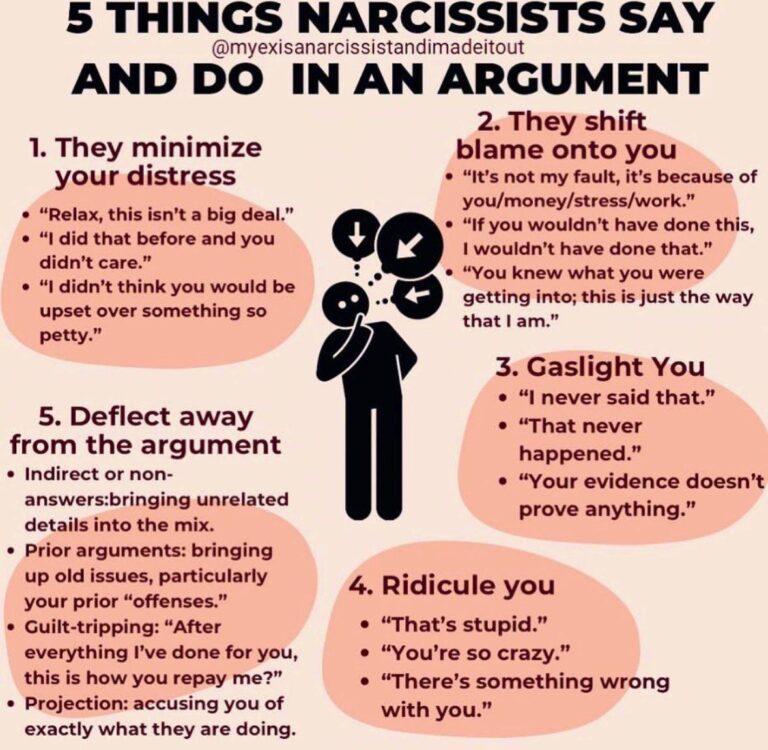Have you ever found yourself stuck in a conversation that feels like it’s going in endless circles, especially with someone who just won’t seem to listen or acknowledge your point? If you’ve ever interacted with a narcissist, you might be all too familiar with this frustrating pattern—what many call “circular talk.” It’s like a roundabout where every word leads you back to square one, leaving you exhausted and unheard. In this article, we’re going to break down what circular talk is, why it happens so often with narcissists, and, most importantly, how you can recognize and break free from this exhausting communication loop. Let’s dive in and start reclaiming your conversations!
Table of Contents
- Understanding Circular Talk and Why It Happens with Narcissists
- Recognizing Common Patterns and Triggers in Circular Conversations
- Practical Strategies to Stay Grounded and Redirect the Dialogue
- Building Healthy Communication Boundaries for Lasting Change
- Insights and Conclusions
Understanding Circular Talk and Why It Happens with Narcissists
When engaging with narcissists, conversations often feel like spinning wheels that never quite get anywhere. This phenomenon, known as circular talk, is a communication pattern where the same points are repeated without resolution or meaningful progress. It’s not just a frustrating quirk but a deliberate tactic rooted in their desire to control the narrative and avoid accountability. Narcissists use this looping dialogue to keep the conversation vague, shifting blame subtly until you question your own perspective. The result? You’re left exhausted, confused, and stuck in a cycle that craves closure but delivers none.
Several factors fuel this exhausting communication style, including:
- Defense Mechanism: Narcissists often deflect criticism to protect their fragile self-image.
- Control Strategy: Circular talk allows them to maintain dominance in conversations, making you chase answers endlessly.
- Manipulative Tactics: Repetition and contradiction serve to confuse and destabilize your confidence.
- Lack of Genuine Empathy: Their inability to truly connect emotionally makes meaningful resolution unlikely.
Recognizing these patterns is the first step to breaking free and reclaiming your voice.
Recognizing Common Patterns and Triggers in Circular Conversations
When engaging in discussions with narcissists, it’s easy to find yourself caught in a loop where conversations feel endlessly repetitive and unproductive. Recognizing the subtle cues that lead to this pattern is crucial. Often, circular talk arises when narcissists deflect accountability or manipulate the narrative to maintain control. Watch out for tactics such as:
- Shifting Blame: They redirect criticism back onto you or others, avoiding responsibility.
- Changing the Subject: Abruptly steering the conversation away from uncomfortable truths.
- Repeating Key Phrases: Using the same talking points to wear down your resistance.
These strategies aren’t accidental but serve to keep you trapped in their world of distorted reality. By identifying these triggers early—like your attempts to set boundaries, express emotions, or question inconsistencies—you can develop the awareness needed to resist falling into their conversational traps. This recognition empowers you to steer away or pause unproductive interactions before they spiral, preserving your emotional well-being.
Practical Strategies to Stay Grounded and Redirect the Dialogue
When caught in a circular conversation with a narcissist, the best approach is to anchor yourself firmly in reality. Start by recognizing your emotional triggers before the dialogue spirals. Practicing deep breathing or silently counting to ten can create a moment of pause, allowing you to respond thoughtfully rather than getting pulled into the whirlwind of repetitive blame or deflection. Keep in mind that staying calm and composed is your superpower—when you refuse to react emotionally, you make it harder for the narcissist to maintain control of the conversation.
To actively steer the discussion toward something productive, try these effective redirection tactics:
- Ask clear, concise questions: Direct the focus away from circular accusations by posing simple questions that require straightforward answers.
- Set boundaries with “I” statements: Use phrases like, “I feel overwhelmed when we keep circling back. Can we talk about solutions instead?”
- Introduce neutral topics: When the cycle starts again, gently switch the topic to common interests or future goals to diffuse tension.
With practice, these strategies help you maintain your ground and shift the energy from draining loops into meaningful exchanges.
Building Healthy Communication Boundaries for Lasting Change
Establishing clear communication boundaries is essential when navigating conversations with narcissists, who often thrive on manipulation and control. Healthy boundaries begin with recognizing your own limits—knowing when to disengage and what topics are off-limits. Instead of engaging in endless circular debates, practice assertive communication by calmly stating your perspective without getting pulled into emotional traps. Remember, it’s perfectly okay to say things like:
- “I hear your point, but I need some time to think.”
- “Let’s take a break and revisit this later.”
- “I’m not comfortable discussing this right now.”
Additionally, protect your emotional well-being by avoiding attempts to rationalize or justify your feelings repeatedly. Narcissists often twist conversations to invalidate your experience, so keep your responses concise and focused on your needs. Creating these boundaries will not only prevent burnout but also foster your sense of empowerment and clarity. Over time, this approach breaks the toxic loop and encourages more respectful and productive interactions.
Insights and Conclusions
Breaking free from circular talk with narcissists isn’t always easy, but understanding how it works is a powerful first step. By recognizing the patterns and setting clear boundaries, you can protect your peace and regain control of your conversations. Remember, it’s okay to step back and prioritize your well-being. Thanks for reading, and here’s to breaking the cycle for good!

